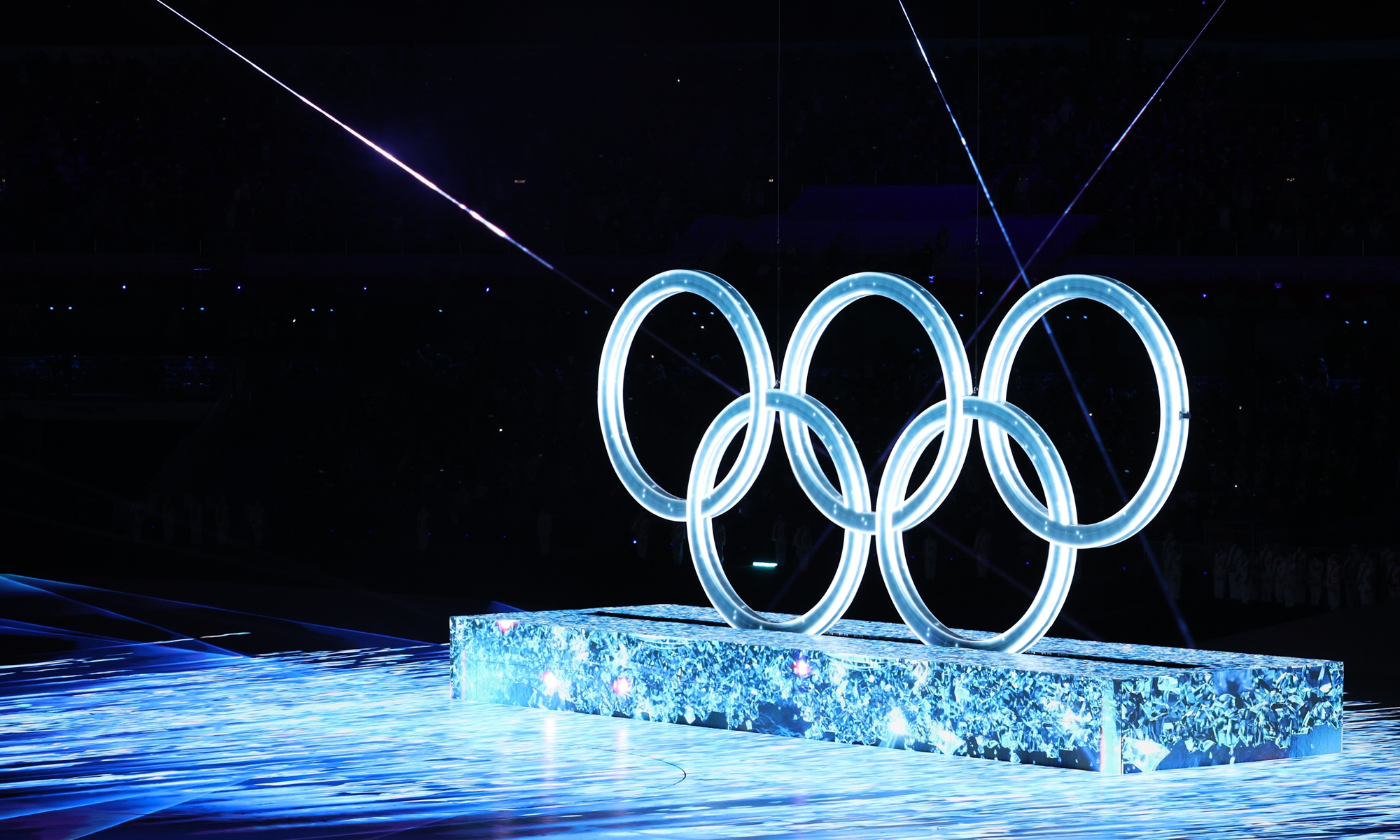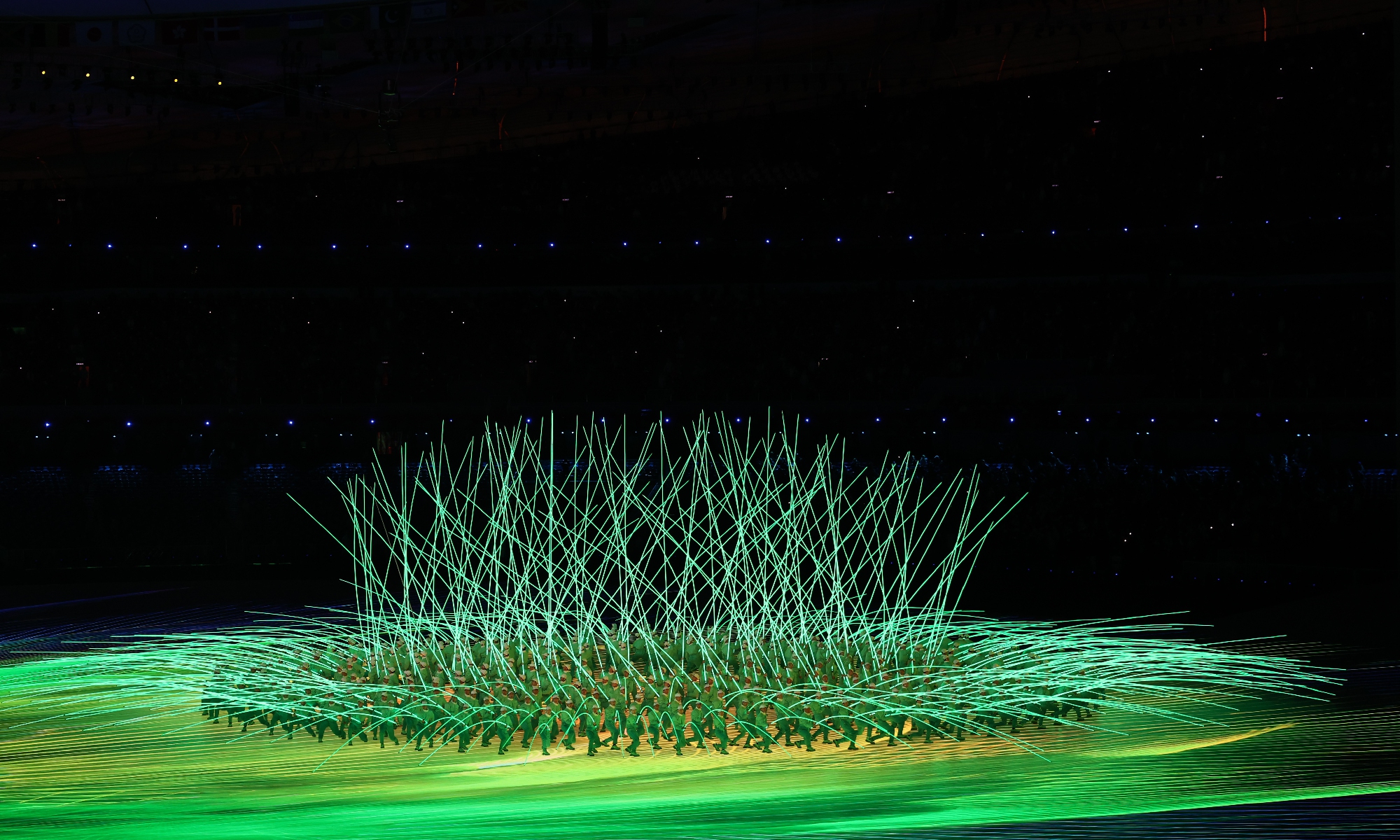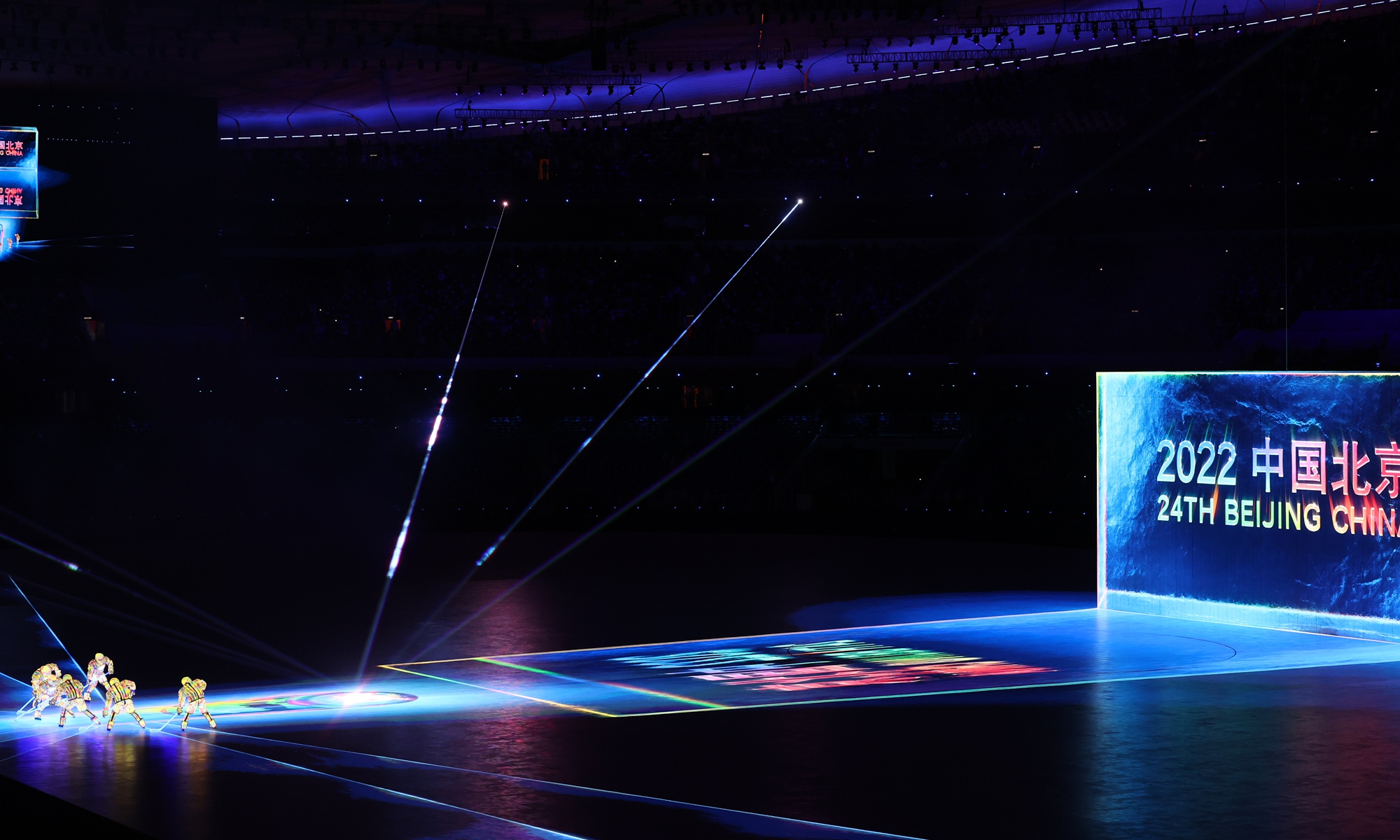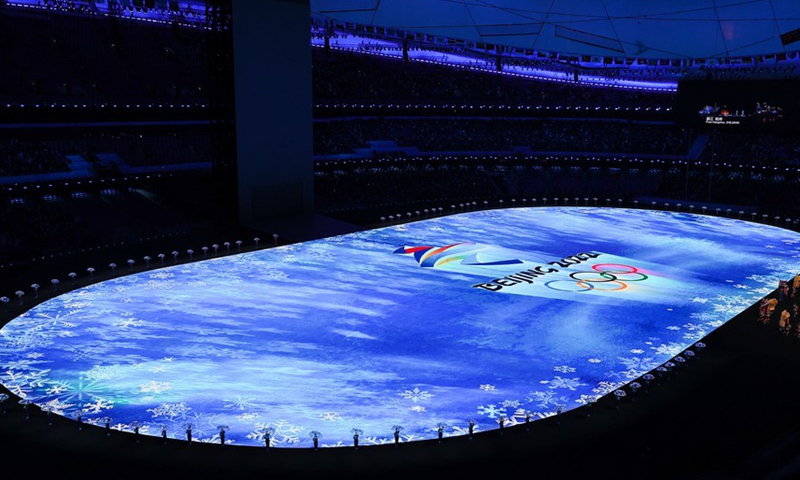
Photo:Li Hao/GT
From the breathtaking display of rising Olympic rings and a colossal ice cube, to the unique ignition of a "snowflake" Olympic flame, Beijing, the first dual Olympic city in the world, is innovating green and high-tech standards for the Winter Games with its strong space power at the opening ceremony on Friday, delivering China's promise of holding a "simple, safe and splendid" event for all.
Insiders said on Friday that behind the grand visual feast of Friday's ceremony was China's space standard and major space project management mode throughout the preparation process. High-tech elements such as 5G, Internet of Things and AI technology accounted for 60 percent of the performance's innovation on Friday.
The main stage of the opening ceremony in the National Stadium, also known as the Bird's Nest, is a huge LED screen. The size of the screen reaches 10,552 square meters, which according to its developer China Academy of Launch Vehicle (CALT), makes it the world's largest one of its kind to date, comprising more than 40,000 LED modules.
The CALT, China's largest developer and producer of carrier rockets, told the Global Times on Friday, that the supersized LED screen would provide the world a visual feast even better than 8k resolution.

Photo:Li Hao/GT
Space control technology helps the precise display of the ice cube. According to CALT, the lifting platform weighing some 400 tons can elevate a payload of 180 tons, and it can strictly control the position of the ice cube within ±1 millimeter when it rises 10 meters from the ground.
To coordinate the thousands of performers at the ceremony and personnel in numerous positions, the CALT applied space technology integrated with Internet of Things, digital drill as well as 5G communications to the building of an intelligent commander center for the opening ceremony.
The number of performers on Friday night is only 20 percent of those for the 2008 Beijing Games, and space technology iskey to making it happen without compromising the splendor of the opening show.

Photo:Li Hao/GT
As the centerpiece of the Friday 100-minute-long ceremony, Beijing lifted the Olympic rings from the ice cube in some 40 seconds.
The rings have a special aluminum alloy truss structure, and a coating of LED display screens as well as diffusion plates, making them as light and strong as China's rockets, CALT developers said.
Weighing around 3 tons with a thickness of only 350 millimeters, the almost paper-thin rings could sustain a strong gale of Scale 6. And just like the Long March-2F manned carrier rocket that always has a standby backup, LED on the rings also has set up redundancy and could be replaced with abnormal parts without delay, they said.

Photo:Xinhua







